
The Common Reasons Succulents Die Easily: Understanding the Challenges

Succulents have become increasingly popular in recent years, adorning homes and gardens with their unique and vibrant appearance. These plants are known for their ability to store water in their leaves, stems, and roots, making them highly adaptable to arid conditions. However, despite their reputation for being hardy, succulents can sometimes be challenging to keep alive. Understanding the common reasons why succulents die easily is crucial for any succulent enthusiast or gardener.
We will explore the various factors that contribute to the demise of succulents. We will delve into the importance of proper watering techniques, the significance of adequate sunlight, and the role of well-draining soil in maintaining the health and vitality of these plants. Additionally, we will discuss the potential threats posed by pests and diseases, as well as the dangers of over-fertilization. By the end of this article, readers will have a comprehensive understanding of the challenges that succulents face and will be equipped with the knowledge to ensure the long-term survival of their beloved plants.
- Lack of proper drainage can cause root rot in succulents
- Overwatering is a common mistake that can lead to the death of succulents
- Insufficient sunlight can cause succulents to become weak and eventually die
- Pests such as mealybugs and aphids can infest succulents and cause damage
- Succulents need well-draining soil to thrive, using regular potting soil can suffocate their roots
- Overfertilization can burn the roots of succulents and result in their death
- Extreme temperatures, both hot and cold, can be detrimental to succulents
- Neglecting to repot succulents when they outgrow their containers can stunt their growth and cause them to die
- Lack of airflow can promote the growth of fungus and diseases in succulents
- Improper handling or care, such as rough handling or dropping, can cause succulents to die
- Frequently Asked Questions
Lack of proper drainage can cause root rot in succulents
Succulents are known for their ability to store water in their leaves and stems, making them highly resilient to dry conditions. However, they are not immune to certain challenges that can lead to their demise. One common reason why succulents die easily is the lack of proper drainage.
When succulents are not planted in well-draining soil or containers with adequate drainage holes, excess water can accumulate around their roots. This creates a perfect breeding ground for root rot, a fungal disease that attacks the roots and prevents the plant from absorbing water and nutrients effectively.
To prevent root rot, it is crucial to use a well-draining soil mixture specifically formulated for succulents. This type of soil allows excess water to drain away quickly, preventing it from pooling around the roots. Additionally, ensure that the containers you use have drainage holes to facilitate the flow of water.
When watering your succulents, it's important to adopt a "soak and dry" approach. This means thoroughly watering the plant until water flows out of the drainage holes, and then allowing the soil to dry out completely before watering again. Avoid overwatering or leaving the plant sitting in waterlogged soil for prolonged periods.
 Could Succulents Be Vulnerable to Fungal Infections?
Could Succulents Be Vulnerable to Fungal Infections?Tips for ensuring proper drainage:
- Choose containers with drainage holes
- Use a well-draining soil mixture
- Water succulents using the "soak and dry" method
- Avoid overwatering and waterlogged soil
By addressing the issue of proper drainage, you can significantly reduce the risk of root rot and increase the chances of your succulents thriving.
Overwatering is a common mistake that can lead to the death of succulents
Overwatering is one of the most common mistakes that succulent owners make, and it can easily lead to the death of these plants. Succulents are adapted to survive in arid conditions, and they have specialized leaves and stems that store water. As a result, they are more prone to rot and fungal infections if they are exposed to too much moisture.
When succulents are overwatered, their roots become waterlogged and are unable to absorb enough oxygen. Without enough oxygen, the roots start to decay, which eventually leads to the death of the plant. Overwatering also creates a favorable environment for various types of fungi, such as root rot, which can quickly spread and kill the succulent.
To avoid overwatering your succulents, it is important to understand their watering needs. Succulents thrive in well-draining soil, so it is crucial to use a potting mix specifically designed for succulents or add perlite or sand to regular potting soil to improve drainage. Additionally, it is essential to water succulents only when the soil is completely dry. Checking the moisture level by sticking your finger an inch into the soil is a good way to determine if it is time to water.
Remember, it is better to underwater succulents than to overwater them. These plants can tolerate drought conditions and are more likely to recover from dehydration than from overhydration. It is always safer to underwater and gradually increase the watering frequency if needed.
 Can Succulents Survive Fire? Fire Safety for Hardy Plants
Can Succulents Survive Fire? Fire Safety for Hardy PlantsInsufficient sunlight can cause succulents to become weak and eventually die
One of the common reasons why succulents die easily is due to insufficient sunlight. Succulents are plants that thrive in bright, direct sunlight. Without enough sunlight, they become weak and are unable to carry out essential processes like photosynthesis.
Photosynthesis is the process by which plants convert light energy into chemical energy, producing glucose and oxygen. This process is vital for the survival of succulents as it provides them with the energy they need to grow, develop, and stay healthy.
When succulents don't receive enough sunlight, their growth becomes stunted, and their leaves may start to appear pale or yellowish. They become more susceptible to diseases and pests and are unable to store enough water in their leaves, stems, or roots.
In order to prevent succulents from dying due to insufficient sunlight, it is crucial to place them in areas that receive at least six hours of direct sunlight per day. South or west-facing windows are usually the best spots for succulents as they receive the most intense sunlight during the day.
If you notice that your succulents are not receiving enough sunlight indoors, you can also supplement their light requirements with artificial grow lights. These lights mimic the sun's rays and can be a great alternative for succulents that are kept in areas with limited natural light.
Remember, providing the right amount of sunlight is essential for the health and survival of your succulents. Be sure to monitor their light exposure and make adjustments as needed to ensure they thrive and don't succumb to the challenges caused by insufficient sunlight.
Pests such as mealybugs and aphids can infest succulents and cause damage
Succulents are known for their ability to thrive in tough conditions, but they are not immune to pests. Mealybugs and aphids are two common pests that can infest succulents and cause significant damage if not addressed promptly.
 Identifying Root Rot in Succulents: Yellow Leaves and Soft Stems
Identifying Root Rot in Succulents: Yellow Leaves and Soft StemsMealybugs are small, soft-bodied insects that feed on the sap of succulent plants. They are typically found in clusters and have a white, cotton-like appearance. Mealybugs can suck out the plant's juices, causing stunted growth, yellowing or browning of leaves, and even death in severe cases. They also produce a sticky substance called honeydew, which can attract ants and lead to the growth of black sooty mold.
Aphids, on the other hand, are tiny insects that also feed on the sap of succulents. They come in various colors, including green, black, brown, and even pink. Aphids reproduce rapidly and can quickly infest an entire succulent, causing distorted growth, curling leaves, and yellowing. They also secrete honeydew, promoting the growth of sooty mold and attracting ants.
To prevent and control infestations of mealybugs and aphids, it is essential to regularly inspect your succulents for signs of these pests. If you spot any, here are some steps you can take to get rid of them:
- Isolate affected plants: Quarantine any infested plants away from the rest of your succulent collection to prevent the pests from spreading.
- Manual removal: Use a cotton swab dipped in rubbing alcohol or a soft brush to physically remove the pests from the affected areas of the plant. Be gentle to avoid damaging the succulent.
- Natural predators: Introduce beneficial insects like ladybugs or lacewings to your garden, as they feed on mealybugs and aphids.
- Organic sprays: Spray the affected succulents with a mixture of water and mild dish soap or neem oil. This can help suffocate and deter the pests.
- Systemic insecticides: If the infestation persists or becomes severe, you may need to resort to using systemic insecticides specifically labeled for use on succulents. Follow the instructions carefully and avoid overusing chemicals.
Remember to monitor your succulents regularly even after treating the infestation, as new pests can always appear. By being proactive, you can protect your succulents from the damaging effects of mealybugs and aphids, ensuring their long-term health and beauty.
Succulents need well-draining soil to thrive, using regular potting soil can suffocate their roots
One of the common reasons why succulents die easily is due to the use of regular potting soil. Succulents have unique root structures that require well-draining soil to thrive. Regular potting soil tends to retain water for longer periods, which can suffocate the delicate roots of succulents.
To ensure the survival of your succulents, it is crucial to use a well-draining soil mix specifically formulated for succulents. These mixes usually contain a combination of materials such as perlite, sand, and grit. The porous nature of these materials allows excess water to drain quickly, preventing root rot and other moisture-related issues.
When repotting your succulents, it is recommended to choose a container with drainage holes at the bottom. This will further aid in the proper drainage of excess water. Additionally, consider adding a layer of rocks or pebbles at the bottom of the pot to create a reservoir for drainage.
 Causes of White Spots on Succulent Leaves: A Comprehensive Guide
Causes of White Spots on Succulent Leaves: A Comprehensive GuideRemember, using the right soil mix and ensuring proper drainage are crucial steps in providing your succulents with the optimal growing conditions they need to thrive.
Overfertilization can burn the roots of succulents and result in their death
One of the common reasons why succulents die easily is overfertilization. While fertilizing your plants is essential to promote growth and health, it is important to strike a balance. Overfertilization can lead to a build-up of salts in the soil, which can burn the delicate roots of succulents.
When succulent roots are burned, they become unable to absorb water and nutrients properly, leading to dehydration and eventually death. Therefore, it is crucial to understand the proper fertilization requirements for your succulents and follow the recommended guidelines.
Here are a few tips to avoid overfertilization and protect your succulents:
- Use a well-draining soil mix: Succulents thrive in well-draining soil that allows excess water to flow out easily. This helps prevent the build-up of salts and minimizes the risk of overfertilization.
- Choose a balanced fertilizer: Opt for a balanced fertilizer specifically formulated for succulents. These fertilizers provide essential nutrients in the right quantities without overwhelming the plants.
- Follow the recommended dosage: Be mindful of the recommended dosage mentioned on the fertilizer packaging. Overfertilizing can be tempting, especially when you want your succulents to grow faster, but it can do more harm than good.
- Monitor your plants: Keep a close eye on your succulents and observe their response to fertilization. If you notice signs of leaf discoloration, wilting, or overall poor health, it may indicate overfertilization. Adjust the frequency or dosage accordingly.
Remember, succulents are adapted to survive in harsh conditions, and they generally require minimal fertilization. By understanding the risks associated with overfertilization and following proper care practices, you can ensure the longevity and health of your beloved succulents.
Extreme temperatures, both hot and cold, can be detrimental to succulents
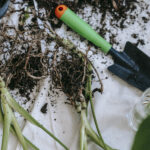 Why Your Succulent Died Overnight and How to Prevent It
Why Your Succulent Died Overnight and How to Prevent ItOne of the most common reasons why succulents die easily is their sensitivity to extreme temperatures. Succulents are plants that have adapted to survive in arid conditions, with the ability to store water in their leaves, stems, or roots. While they are known for their ability to withstand drought, they are not invincible to temperature fluctuations.
High temperatures:
When exposed to excessively high temperatures, succulents can suffer from heat stress. The intense heat can cause the plant's cells to dehydrate rapidly, leading to wilting, discoloration, and even tissue damage. In extreme cases, prolonged exposure to scorching temperatures can be fatal for succulents.
Low temperatures:
On the other hand, succulents are also susceptible to cold temperatures, especially if they are not cold-hardy varieties. Frost and freezing temperatures can cause the water inside the plant's cells to freeze, leading to cell rupture and irreversible damage. Succulents that are not adapted to cold conditions may experience leaf discoloration, wilting, and even death when exposed to cold weather.
Protecting succulents from extreme temperatures:
To ensure the health and survival of your succulents, it is crucial to protect them from extreme temperatures. Here are some measures you can take:
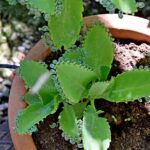 Are Mother of Thousands Succulents Toxic to Pets?
Are Mother of Thousands Succulents Toxic to Pets?- Provide adequate shade: Shield your succulents from direct sunlight during the hottest parts of the day to prevent overheating. Consider using shade cloth or placing them in areas with partial shade.
- Use insulation: During cold weather, provide insulation to protect your succulents. You can cover them with frost blankets, move them indoors, or place them in a greenhouse.
- Monitor temperature: Keep an eye on the weather forecast and be aware of temperature fluctuations. If extreme temperatures are expected, take necessary precautions to safeguard your succulents.
- Choose cold-hardy varieties: If you live in an area with cold winters, opt for succulent species that are known to be cold-hardy. These varieties are more resilient and better equipped to withstand freezing temperatures.
By understanding the impact of extreme temperatures and taking appropriate measures to protect your succulents, you can help ensure their longevity and prevent them from easily dying.
Neglecting to repot succulents when they outgrow their containers can stunt their growth and cause them to die
Succulents are known for their ability to thrive in harsh conditions, but even these resilient plants have their limits. One of the most common reasons why succulents die easily is the failure to repot them when they outgrow their containers.
When succulents are left in cramped pots for too long, their roots become overcrowded and restricted. This can lead to poor nutrient absorption and hinder their growth. As a result, the succulent may start to show signs of distress, such as stunted growth, yellowing leaves, or even wilting.
Repotting succulents is crucial to provide them with adequate space for their roots to spread out and access essential nutrients. It also helps prevent root rot, which can occur when excess moisture accumulates in the soil due to poor drainage.
To repot a succulent, carefully remove it from its current container and gently loosen the roots. Choose a new pot that is slightly larger and has drainage holes. Fill the new container with well-draining soil, specifically formulated for succulents. Place the succulent in the center of the pot and fill in the gaps with more soil, ensuring that the plant is securely positioned. Water lightly and allow the soil to dry out before watering again.
Regularly repotting succulents every 1-2 years, or when their roots start to outgrow their containers, promotes healthy growth and prevents the risk of root-bound plants. It allows them to continue thriving and adds aesthetic appeal to your indoor or outdoor succulent garden.
 Identifying Root Rot: Spotting Unhealthy and Healthy Roots
Identifying Root Rot: Spotting Unhealthy and Healthy RootsRemember, neglecting to repot succulents can have detrimental effects on their overall health and longevity. By understanding the importance of repotting and following the proper guidelines, you can ensure that your succulents have the best chance of survival and vibrant growth.
Lack of airflow can promote the growth of fungus and diseases in succulents
Lack of airflow can be a major factor contributing to the death of succulents. Succulents thrive in dry environments, and stagnant air can create a damp and humid atmosphere that promotes the growth of fungus and diseases.
When succulents are kept in an area with poor air circulation, moisture tends to accumulate on their leaves and stems. This excess moisture can lead to rotting and the development of fungal infections, such as powdery mildew or root rot.
To prevent this, it is crucial to provide adequate airflow around your succulents. Placing them in a well-ventilated area or using a fan to circulate air can help mitigate the risk of fungal growth and diseases.
Additionally, avoid overcrowding your succulents. When plants are too close together, air circulation becomes limited, increasing the chances of moisture buildup and the spread of diseases.
Remember, succulents are adapted to arid environments, and proper airflow is essential for their overall health and well-being.
 Managing White Fuzz on Succulents: Causes and Solutions
Managing White Fuzz on Succulents: Causes and SolutionsImproper handling or care, such as rough handling or dropping, can cause succulents to die
One of the common reasons why succulents die easily is improper handling or care. Succulents, though resilient plants, can be sensitive to rough handling or dropping. The leaves and stems of succulents are delicate and can easily break or bruise when mishandled.
To ensure the health and longevity of your succulents, it's important to handle them with care. When moving or transplanting your succulents, be gentle and avoid dropping them. Always support the base of the plant and be cautious of any fragile leaves or stems.
Additionally, rough handling can disrupt the delicate balance of a succulent's root system. The roots of succulents are vital for their overall health and proper nutrient absorption. By being too rough with the plant, you risk damaging the roots, which can lead to root rot or other issues.
To properly care for your succulents, avoid rough handling and take the necessary precautions when moving or transplanting them. Treat your succulents with the same care you would give to any other delicate plant.
Insufficient sunlight and poor lighting conditions can contribute to the death of succulents
Succulents thrive in bright sunlight, and insufficient light can be detrimental to their health. When succulents don't receive enough sunlight, they can become weak and vulnerable to various issues.
It's important to place your succulents in a location with ample sunlight. Ideally, they should receive at least 6 hours of direct sunlight each day. If you're growing succulents indoors, ensure they are placed near a sunny window or invest in artificial grow lights to provide them with the necessary light.
On the other hand, succulents can also suffer if exposed to excessive direct sunlight, especially during the hottest parts of the day. This can lead to sunburn or scorching of the leaves. To prevent this, it's advisable to provide some shade or filter the sunlight during the peak hours of heat.
 Ant-Free Succulents: Effective Ways to Eliminate Ants
Ant-Free Succulents: Effective Ways to Eliminate AntsFinding the right balance of sunlight is crucial for the survival of your succulents. Too little or too much sunlight can be detrimental to their health, so it's important to provide them with the optimal lighting conditions.
Overwatering or improper watering techniques are common culprits behind succulent deaths
Overwatering is a common mistake many succulent owners make, and it can quickly lead to the death of these plants. Succulents have adapted to survive in arid environments, and their roots are designed to store water for extended periods.
When succulents are overwatered, their roots become saturated, leading to root rot and other fungal diseases. The excess moisture prevents the roots from receiving the necessary oxygen, causing them to deteriorate and eventually die.
To avoid overwatering, it's crucial to understand the watering needs of your succulents. The frequency of watering largely depends on factors such as the climate, pot size, and soil type. Generally, it's better to underwater than to overwater succulents. Allow the soil to dry out completely between waterings and ensure proper drainage to prevent water from pooling at the bottom of the pot.
Proper watering techniques also include avoiding overhead watering, as it can lead to rot and fungal issues. Instead, water the soil directly at the base of the plant, allowing the roots to absorb the water without wetting the leaves.
By mastering the art of watering, you can prevent one of the most common causes of succulent deaths and ensure the longevity of your plants.
Frequently Asked Questions
1. Why do succulents die so easily?
 Signs of a Dying Succulent: Understanding Leaf Loss
Signs of a Dying Succulent: Understanding Leaf LossSucculents can die easily due to overwatering, lack of sunlight, poor drainage, or being exposed to extreme temperatures.
2. How often should I water my succulents?
Succulents require well-drained soil and should be watered only when the top inch of soil feels dry. On average, watering once every 1-2 weeks is sufficient.
3. What type of sunlight do succulents need?
Succulents thrive in bright, indirect sunlight. They should be placed near a window where they can receive at least 6 hours of sunlight per day.
4. Can succulents survive in cold climates?
While many succulents are hardy and can survive in cold climates, most prefer warmer temperatures. It is important to protect them from frost or extreme cold conditions.
If you want to read more articles similar to The Common Reasons Succulents Die Easily: Understanding the Challenges, you can visit the Pests and Diseases category.

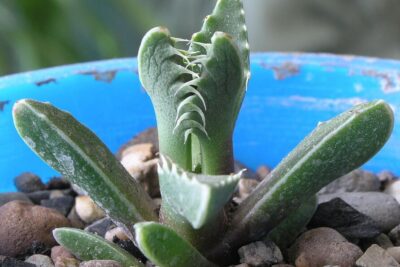

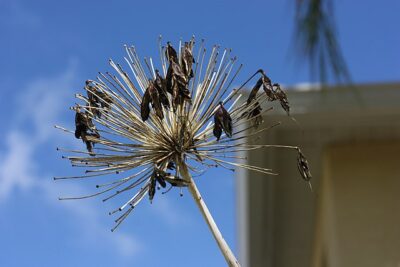

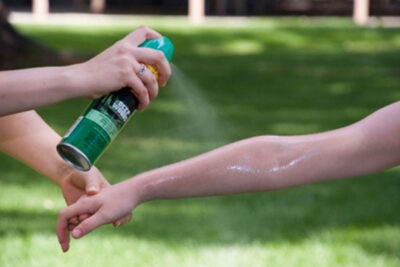
You Must Read